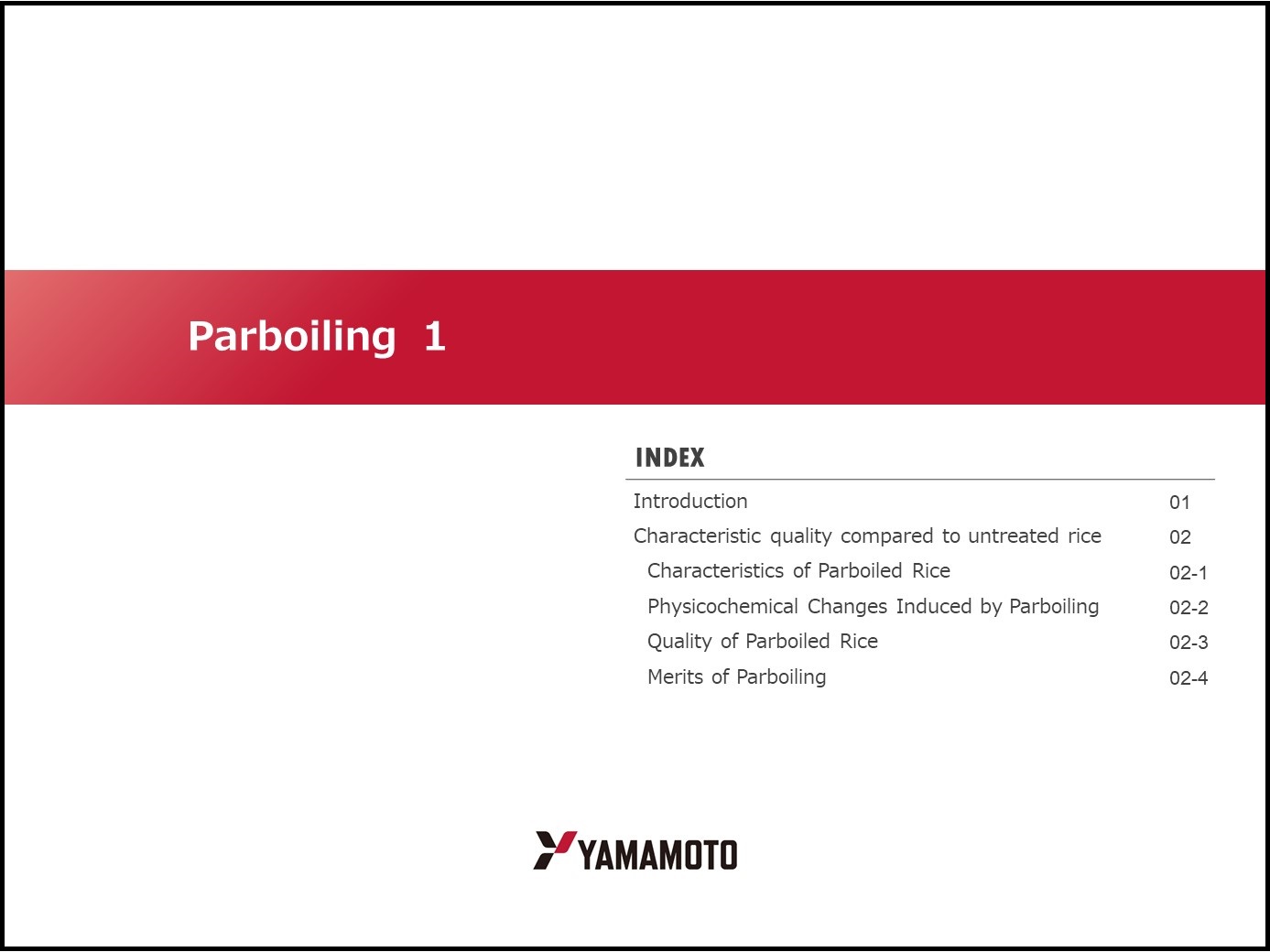49. Parboiling 1
- INDEX -
Introduction
Characteristic quality compared to untreated rice
Characteristics of Parboiled Rice
Physicochemical Changes Induced by Parboiling
Quality of Parboiled Rice
Merits of Parboiling
Introduction
Parboiled rice is a traditional processed rice that is produced mainly in India and Sri Lanka and in other countries.
It is not liked by people in eastern countries such as Myanmar, Thailand, China, Indonesia, the Philippines, Korea and Japan. At present, parboiled rice is also produced in Middle East, Africa, Europa and parts of South and North Americas. There was a report that up to 20% of the 500 million tons of rice produced a year worldwide is processed as parboiled rice. The production and consumption of parboiled rice have increased in Africa and Central and South America with marked increases in population in recent years. Its importance has been increasing.
Described simply, the paddy is soaked in water, steamed to gelatinize starchy rice hydrocarbons, and then dried to parboiled rice. It is then milled and is consumed like conventional boiled rice. Gelatinization of the hydrocarbons accelerates the hardening of rice grains and inhibits cracks during drying and occurrence of broken rice during milling.
It is also confirmed that gelatinization changes the texture of rice grains, decreases viscosity, improves taste for consumers, and enhances nutritional value as vitamins and minerals in the germ and bran layers are transported to milled rice portions.
Characteristic Quality compared to Untreated Rice
The characteristics of parboiled rice are ascribed to the hardening of rice grains and (brown) coloring during processing. The former in induced by gelatinizing rice starch during the hydrothermic process from soaking and steaming. The latter is induced by three processes considered of soaking, steaming and drying.
